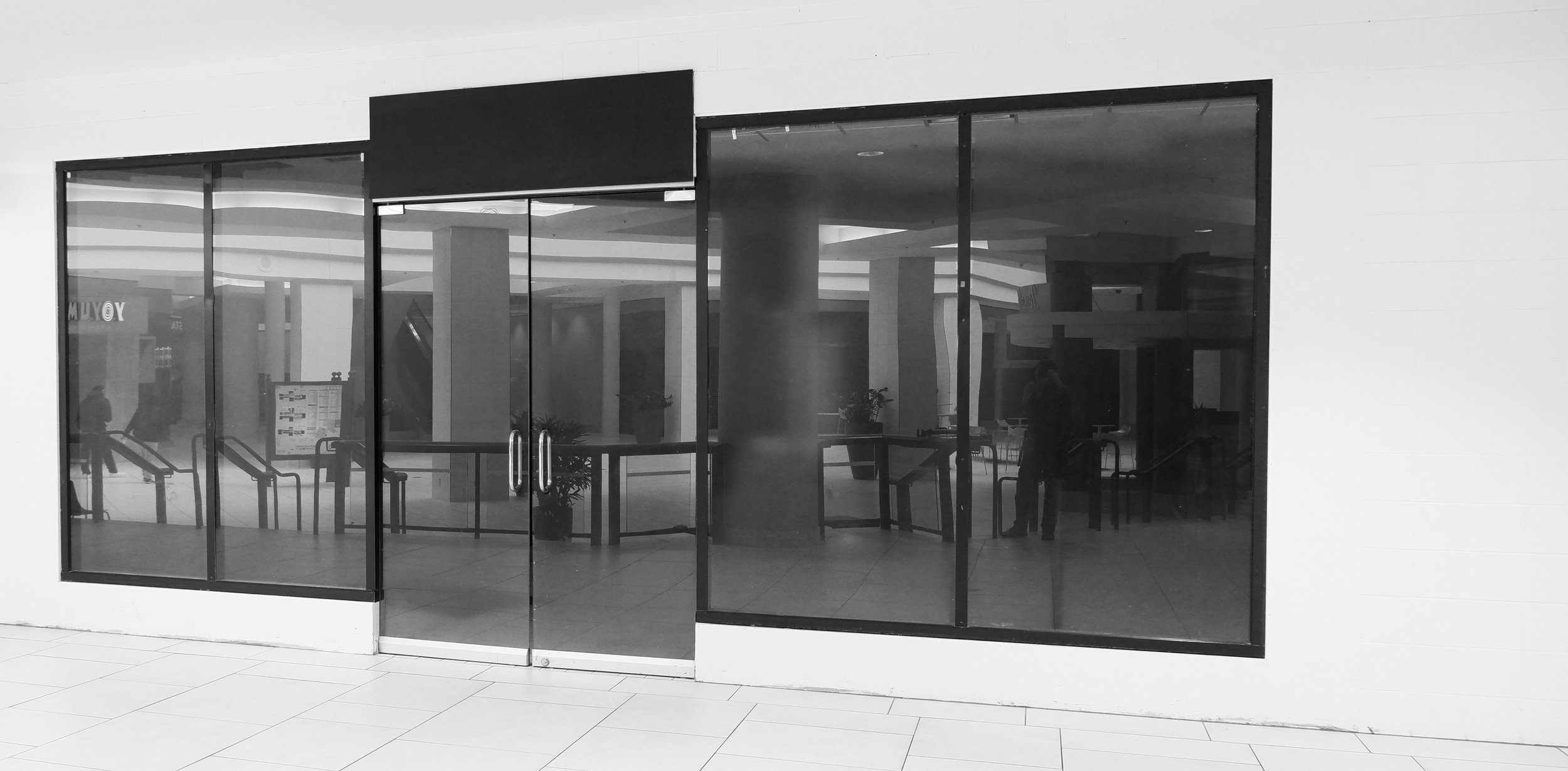Historically, I have disliked everything about malls. An American mall is a concentrated epicenter of stressors. Mostly it’s the crowds. But the little things—the shitty food and violent perfumes, the gluttony and neon lighting and bad carpet and the loneliness, decorated with awful fashion and corporate sculptures—all of it, swarming together to create a living hall of horrors.
At least, that is what I used to think, until a fateful visit to the Bellis Fair Mall changed me forever.
—
I needed to return a shirt.
The shirt was a gift from my ex-wife, from when we were still married. I put off returning the shirt since it required a run to the mall, which promised to include the aforementioned deterrents. Also, I was so completely through with everything involving our turbulent marriage, I condemned the shirt to the dark end of my closet, determined to put it out of mind.
Still, we ran into each other, the shirt and I, in the closet. Our encounters were a reminder that the opportunity to make a return was probably long gone, and I cursed my pettiness for allowing something so radioactive to linger in my wardrobe. One day, I just snatched the shirt from its hanger and drove straight to the mall. I had done this suddenly, without thinking, without considering it was the busiest shopping day of the year—Black Friday.
I was astonished to find the mall parking lot, packed solid—a carpet of cars. There were even people waiting in cars, idling at the head of each row, waiting for a spot to open.
Crestfallen, I turned to escape. But on my way out, I happened on an open space.
After a moment’s consideration, I remembered, I hadn’t actually come to buy anything. I was there to make a return. Most certainly the crowds would be incredible, but they were not my crowds. Maybe I could blend in and slip through, undetected.
—
Inside the mall didn’t disappoint.
I saw entire families wearing nothing but pyjamas and house slippers, brawling with other families also wearing nothing but pyjamas and house slippers. There were wandering, parentless children, lost and hysterical and available for kidnapping. Some shoppers were actually celebrating because they’d scored multiple big-screen TV’s and microwaves. There were teams of people, falling in love, people falling out of love, people who were adrift and horrified and reeling in a cacophonic swell of so many lives converging into one terrible swan song of self destruction and bargain bloodthirst.
I was in love.
It wasn’t just the people I was noticing for the first time—I’d been to that mall so many times, and I was only just noticing the building. The high, beige corridors—sweeping and claustrophobic. The halls, joined in the middle, herding shoppers to the food court. And the central fountain, full of rotten coins, and how each coin represented a desperate wish (as only the wishes wished on the coins tossed into a mall water feature can be).
—
In the years since my visit on that fateful Black Friday, American malls have experienced a notable decline. Thanks to a combination of unsustainable expansions in retail, and evolving consumer behavior, the deteriorating popularity and economic health of malls has created a phenomenon of dead or dying properties.
The most recent numbers I could find on our local mall, the Lloyd Center, were in 2016 when Lloyd had an 11% vacancy rate. Since then, Lloyd Center has seen a fifty million dollar renovation (!), and Sears, Lloyd’s second of four anchor tenants, closed.
But, even as they become increasingly vacant, my fascination with malls remains as youthful as ever.
Their emptied corridors become an invitation, like a massive installation of mistake-art, there is something eerily alluring about these big and glitzy palaces, built to dazzle crowds, but which remain stubbornly desolate. Their disquieting emptiness lends an irresistible commentary to consumerism and corporate hubris—the mall is a ghost of Americana, and a haunting reminder that we may intend many things for our creations, but once given life, there is no telling which way they’ll grow up.
I don’t assume the owners of malls would be excited to hear their investment property is just as attractive deserted (if not moreso), than packed. I’m sure they were hoping to lure a more spendy crowd than to host loitering meanderthals.
Because I love malls, and don’t want to see them raised, I am hoping the property owners who find themselves strapped to any of these poisonous properties would get in touch with me immediately to hear my proposal to rescue their dead mall. Seriously.
Until then, happy not-shopping.









